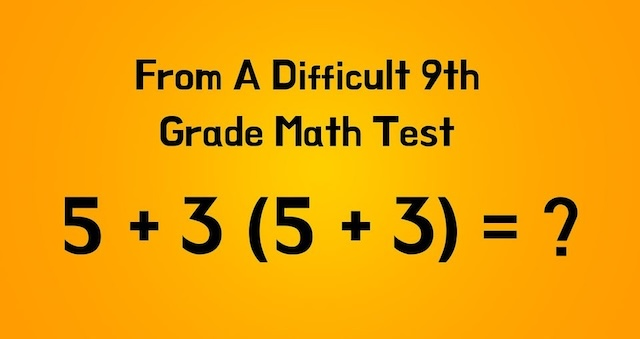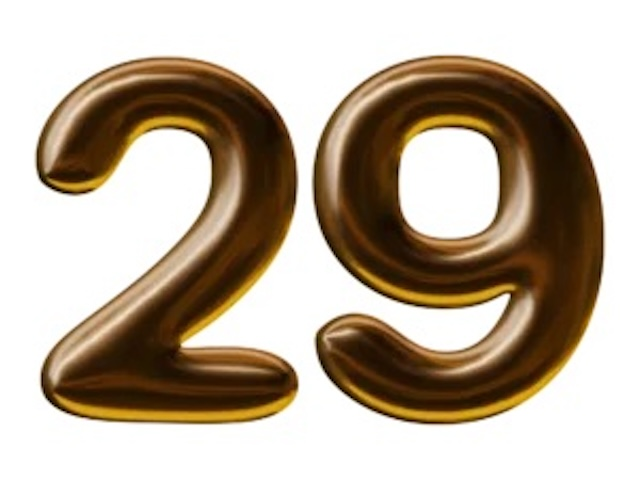There’s something strangely satisfying about solving a math puzzle—especially when it seems easy at first, but then throws a curveball your way. If you’re someone who enjoys flexing your mental muscles, get ready. This 9th-grade level math problem has tripped up more people than you’d expect.
Why? Because it plays a sneaky trick on your brain using a simple equation and one classic concept: order of operations.
Here’s your challenge:
5 + 3 (5 + 3) = ?
Looks innocent enough, right? But as with most things in math, what matters isn’t what you see—it’s how you solve it.

Why So Many People Get This Wrong
Before we dive into solving it, let’s talk about where things usually go sideways. This kind of equation is a textbook trap for anyone who forgets or misapplies the order of operations (a.k.a. PEMDAS or BIDMAS).
Here’s where folks mess up:
- They go left to right, instead of using the proper operation hierarchy.
- They overlook what’s in parentheses or misunderstand how multiplication interacts with them.
- They confuse implicit multiplication (you know, that sneaky kind where a number is pressed up against parentheses) with normal multiplication.
Sound familiar? Don’t worry—we’re about to break this down the right way.
Video: 6 ‘Impossible’ Puzzles Only A ‘Genius’ Can Solve
Let’s Solve It Together: Step-by-Step Breakdown
So here’s the problem again:
5 + 3 (5 + 3)
Now, let’s take it slow and follow PEMDAS:
- P – Parentheses
- E – Exponents
- MD – Multiplication & Division (from left to right)
- AS – Addition & Subtraction (from left to right)
Step 1: Handle the Parentheses

First things first, we solve whatever is inside the parentheses:
(5 + 3) = 8
Now our equation looks like:
5 + 3 × 8
Step 2: Do the Multiplication
Here’s where people often go wrong by doing the addition first. But multiplication comes before addition in PEMDAS. So we do:
3 × 8 = 24
Now we have:
5 + 24
Step 3: Finish with Addition
Finally:
5 + 24 = 29
The final answer is: 29

Boom. That’s it. Did you get it right?
Still Scratching Your Head? Here’s Why It’s Tricky
It’s not that the math itself is hard—it’s the formatting. The presence of parentheses without a visible multiplication sign often throws people off. We tend to read it as:
“Oh, it’s all inside the parentheses.”
But nope. That 3 (5 + 3) is shorthand for:
3 × (5 + 3)
And that distinction is everything. It separates those who get it right from those who end up way off course.
What Makes This a Great Math Puzzle
This isn’t just a gotcha-style trick question. It’s a clever little way to reinforce a key math concept that trips up students (and even adults) all the time.
Here’s why it works:
- It looks simple but rewards precision.
- It highlights how important the order of operations really is.
- It exposes how bad habits (like reading left to right) can lead you astray.
Honestly, it’s the kind of math problem every student should see—because once you’ve solved it, you won’t forget the lesson.
Real-World Connection: Why PEMDAS Still Matters
Video: Brighten up your routine with these enjoyable, mind-boosting puzzles
You might be wondering, “Okay, but when am I ever going to use this in real life?”
Great question. And here’s the answer: every time you work with numbers.
Whether you’re adjusting a recipe, calculating a tip, or budgeting your monthly expenses, the principles behind PEMDAS help you get the numbers right.
Plus, solving puzzles like this keeps your mind sharp, analytical, and focused—skills that pay off in way more than just math class.
Ready for the Next Challenge?
If this puzzle got your brain buzzing, good! That’s exactly the point. And if you nailed the answer—heck yes, you’ve earned your bragging rights.
But don’t stop here. There’s a whole world of logic puzzles, number riddles, and critical-thinking challenges out there just waiting to stump you next. The more you practice, the more your problem-solving skills will grow.
Share the Challenge, Spark a Brainstorm
Think you’re the only one who loves puzzles like this? Think again. Share this equation with a friend, your siblings, or even your parents. See if they can get it right without Googling the answer.
It’s a fun way to bond, laugh over common mistakes, and maybe even start a friendly math battle or two.
Conclusion: A Simple Equation, A Powerful Lesson
This deceptively tricky 9th-grade math problem is more than just numbers on a screen. It’s a reminder that attention to detail matters. That the basics of math still apply, no matter how old you are. And that sometimes, the simplest challenges can offer the most satisfying victories.
So next time you see a puzzle like this, don’t rush it. Slow down, think clearly, and trust your math training. You’ve got this.


